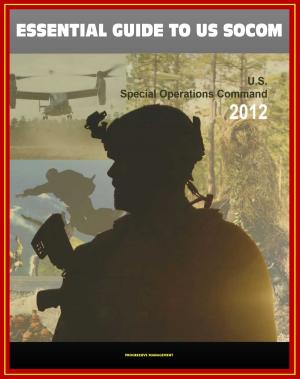Air National Guard (ANG) Structure for the Twenty-first Century: The Multimission Framework for Total Force Integration - ANG History and Culture, Why Does the Governor Need Fighter Airplanes
Nonfiction, History, Military, Aviation, United States| Author: | Progressive Management | ISBN: | 9781370408016 |
| Publisher: | Progressive Management | Publication: | September 19, 2016 |
| Imprint: | Smashwords Edition | Language: | English |
| Author: | Progressive Management |
| ISBN: | 9781370408016 |
| Publisher: | Progressive Management |
| Publication: | September 19, 2016 |
| Imprint: | Smashwords Edition |
| Language: | English |
This report has been professionally converted for accurate flowing-text e-book format reproduction. Since the Vietnam War, much has changed with regard to the Total Force and the structure of the Department of Defense. The Air National Guard, in particular, began many transformational programs designed to better enhance its mission capabilities for both state and federal missions. In fact, the Air National Guard evolved into an operational reserve necessary to successfully fight the nation's wars. Ultimately, the strength of the Air National Guard is built upon its greatest asset: its people. With people at the center of the equation, is there a best organizational construct in which to form an Air National Guard unit? If so, what might that unit look like? If not, might there be certain traits which resonate successfully within all the models? With these research questions in hand, the author began a quest for resolution on the optimum Guard organizational construct.
When a researcher pursues new subject matter, there is the possibility that the research results may be significantly different than expected. In this case, through a myriad of senior officer interviews, multiple model case studies, an expansive literature review, and a thorough review of the challenges in new units, the research indicated that there is almost no limit to the number of successful types of Total Force Integration models. However, what the research did demonstrate was the importance of certain core threads necessary for any models to both survive and thrive. Because of these core threads, this study recommends a common framework for the way ahead for future integration efforts, which shall be presented as the "Multimission Framework for Total Force Integration."
Within the discussion, it became necessary to examine the historical chronology of Total Force Integration as well as Air National Guard history and culture. A thorough examination of cultural artifacts and challenges leads to the proverbial question of why a governor needs fighters. US Air Force core competencies remind us of the need for Guard members to be proficient in the same missions as their active duty peers. However, Guard personnel also have a dual-mission nature due to state and federal laws. A brief look at US Code, Articles 10 and 32, demonstrates the key differences by law and clarifies the common misconceptions in this statutory guidance. With the groundwork laid, the study examines all current major integration models in vogue: the Guard Reserve/Active Associate Wing, the Blended Wing, and the Integrated Wing. Through careful examination of the strengths and weaknesses behind each model, a Multimission Framework is proposed as the way ahead.
This report has been professionally converted for accurate flowing-text e-book format reproduction. Since the Vietnam War, much has changed with regard to the Total Force and the structure of the Department of Defense. The Air National Guard, in particular, began many transformational programs designed to better enhance its mission capabilities for both state and federal missions. In fact, the Air National Guard evolved into an operational reserve necessary to successfully fight the nation's wars. Ultimately, the strength of the Air National Guard is built upon its greatest asset: its people. With people at the center of the equation, is there a best organizational construct in which to form an Air National Guard unit? If so, what might that unit look like? If not, might there be certain traits which resonate successfully within all the models? With these research questions in hand, the author began a quest for resolution on the optimum Guard organizational construct.
When a researcher pursues new subject matter, there is the possibility that the research results may be significantly different than expected. In this case, through a myriad of senior officer interviews, multiple model case studies, an expansive literature review, and a thorough review of the challenges in new units, the research indicated that there is almost no limit to the number of successful types of Total Force Integration models. However, what the research did demonstrate was the importance of certain core threads necessary for any models to both survive and thrive. Because of these core threads, this study recommends a common framework for the way ahead for future integration efforts, which shall be presented as the "Multimission Framework for Total Force Integration."
Within the discussion, it became necessary to examine the historical chronology of Total Force Integration as well as Air National Guard history and culture. A thorough examination of cultural artifacts and challenges leads to the proverbial question of why a governor needs fighters. US Air Force core competencies remind us of the need for Guard members to be proficient in the same missions as their active duty peers. However, Guard personnel also have a dual-mission nature due to state and federal laws. A brief look at US Code, Articles 10 and 32, demonstrates the key differences by law and clarifies the common misconceptions in this statutory guidance. With the groundwork laid, the study examines all current major integration models in vogue: the Guard Reserve/Active Associate Wing, the Blended Wing, and the Integrated Wing. Through careful examination of the strengths and weaknesses behind each model, a Multimission Framework is proposed as the way ahead.















